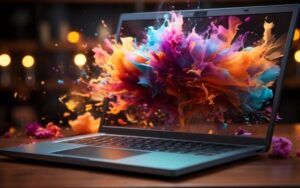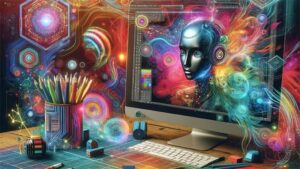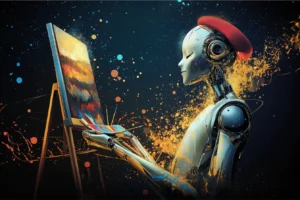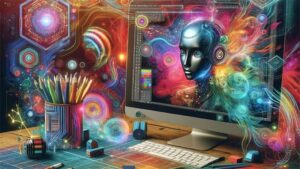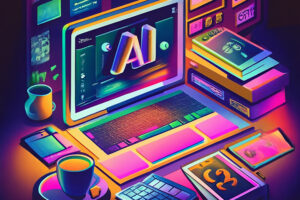The advent of AI technology has revolutionized many industries, including the realm of art. As artists and commercial entities explore the capabilities of AI-generated art, a pressing question emerges: Can I use AI generated art commercially? In this article, we aim to unravel this query by examining the potential commercial applications of AI art, its legal implications, and the ethical considerations one must ponder.
In the past decade, AI has significantly transformed the way art is created and consumed. With the rise of powerful AI image generators, artists and businesses now have unprecedented opportunities to integrate AI art into their commercial endeavors. However, the process is not without its challenges, as it requires navigating complex legal landscapes and ethical questions.

Understanding AI Generated Art
What is AI Art?
AI generated art is visual artwork created with the assistance of artificial intelligence technology. By leveraging advanced algorithms and neural networks, AI can produce images that resemble human-made art, often indistinguishable from traditional artworks.
How is AI Art Created?
AI art is typically created using machine learning models trained on vast datasets of existing artworks. These models learn patterns and styles that they then apply to generate unique pieces of art.
Commercial Potential of AI Art
AI Art in Advertising
Many companies are turning to AI-generated art as a cost-effective solution for advertising and marketing campaigns, enabling them to produce dynamic visuals tailored to their brand.
AI Art in Product Design
From fashion to product packaging, AI art is being utilized in innovative ways to enhance the aesthetic appeal of goods, contributing to unique and eye-catching designs.
Legal Considerations
Copyright Issues
A significant aspect of using AI art commercially involves understanding copyright laws. The lack of clear legislation means that copyright ownership of AI-generated art is often disputed.
Intellectual Property Rights
Determining intellectual property rights for AI art is complex, as it involves balancing the contributions of AI developers, data sources, and human collaborators.
Ethical Considerations
Plagiarism Concerns
One ethical issue surrounding AI art is the potential for plagiarism, as AI models are trained on existing artworks without explicit consent from original creators.
Impact on Artists
The widespread use of AI-generated art raises concerns about the impact on traditional artists, who may experience increased competition and decreased demand for their skills.
Practical Steps for Using AI Art Commercially
Licensing AI Art
It is advisable to obtain a proper license when using AI-generated art commercially to avoid potential legal disputes and ensure compliance with any copyright laws.
Partnering with AI Art Platforms
Teaming up with reputable AI art platforms can help individuals and businesses navigate the complexities of using AI art in commercial projects.
Future of AI Generated Art in Commerce
The future looks promising as advancements in AI technology continue to enable more sophisticated and diverse art creations. Industries worldwide are expected to increasingly adopt AI-generated art for its consistency, creativity, and scalability.
Conclusion
The question ‘Can I use AI generated art commercially?’ invokes substantial conversation around legality, ethics, and the evolving nature of art in the digital age. Although challenges exist, the commercial potential of AI-generated art is vast, presenting opportunities for innovation across industries.

FAQ
Is AI-generated art protected by copyright?
Currently, copyright protection for AI-generated art is ambiguous, and varies by jurisdiction. It is recommended to consult with legal experts on a case-by-case basis.
Do I need permission to use AI-generated art commercially?
It is prudent to seek permission or obtain licenses, especially if the AI-generated art is based on works protected by copyright.
How can I ensure I’m ethically using AI art?
To ethically use AI-generated art, ensure transparency in your usage, credit AI platforms, and respect original artists’ rights and contributions.


